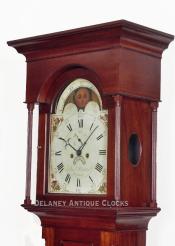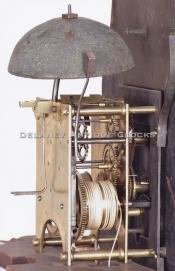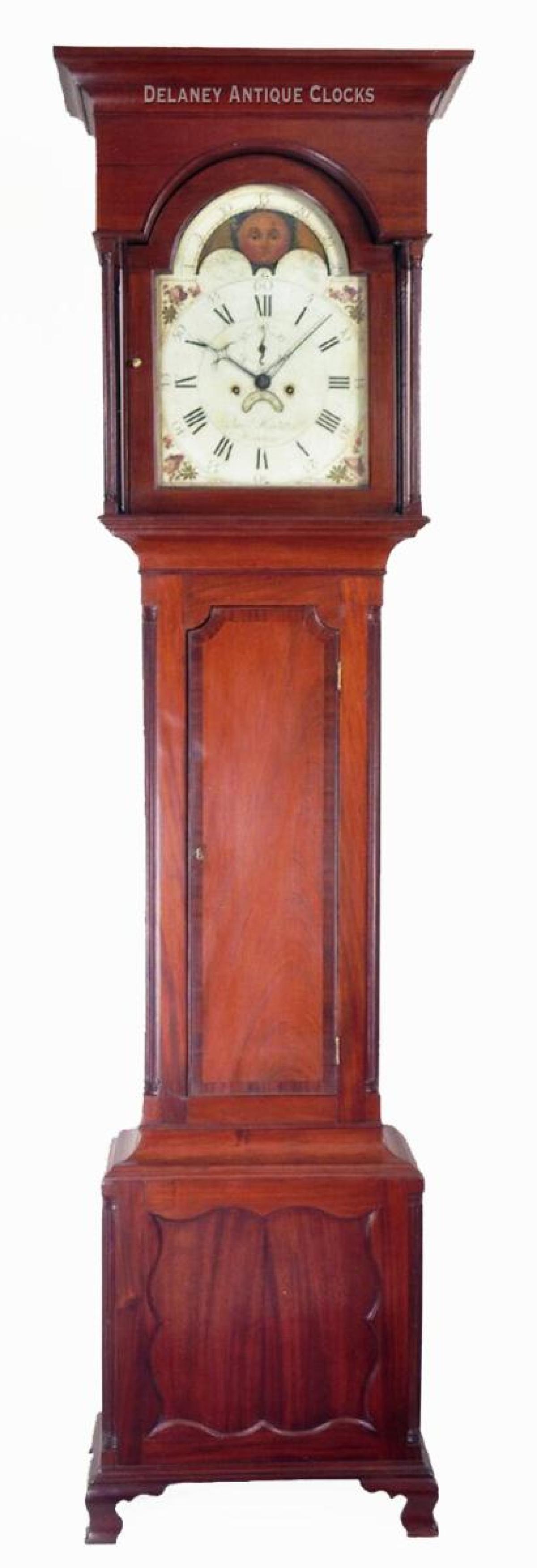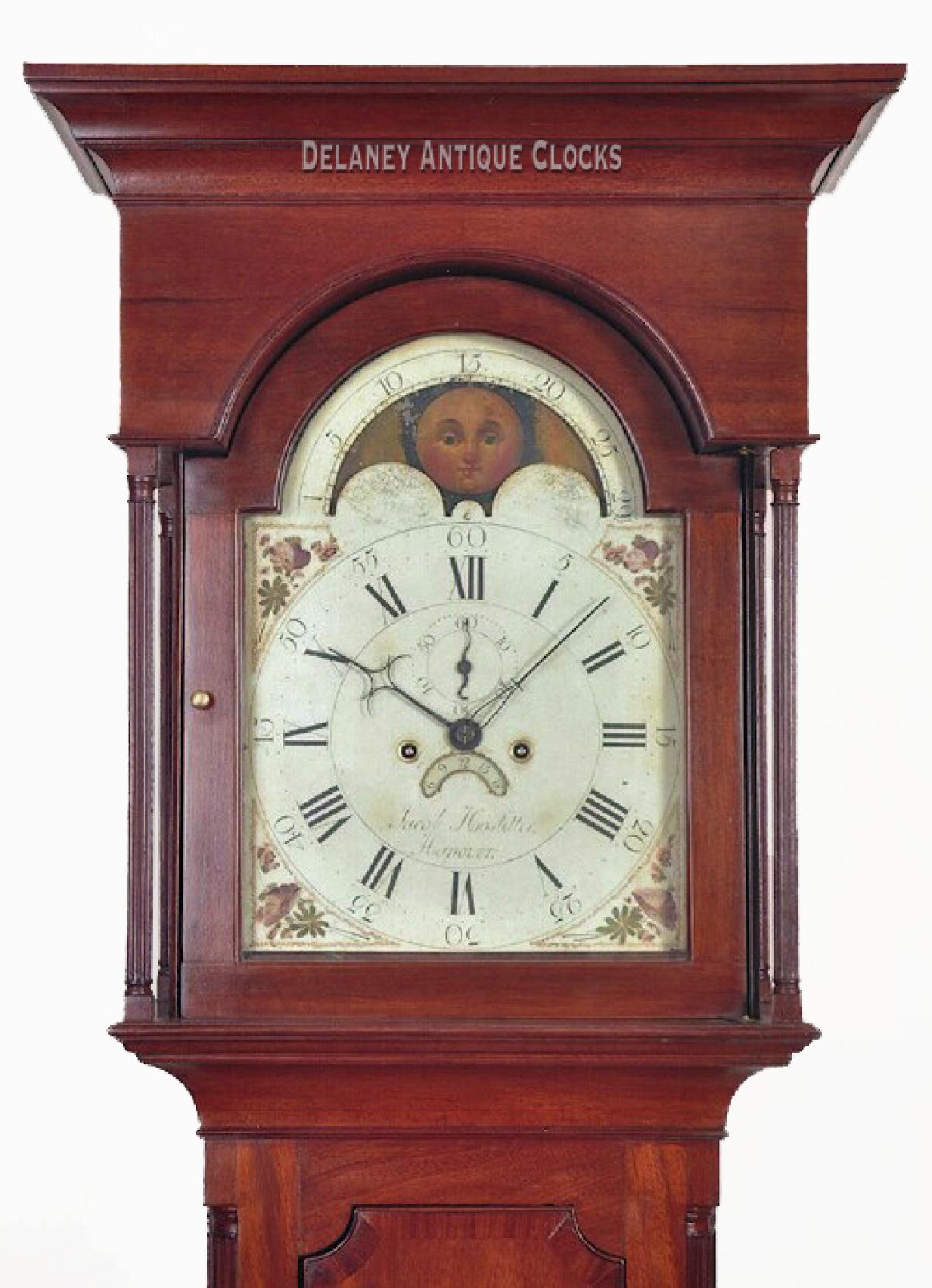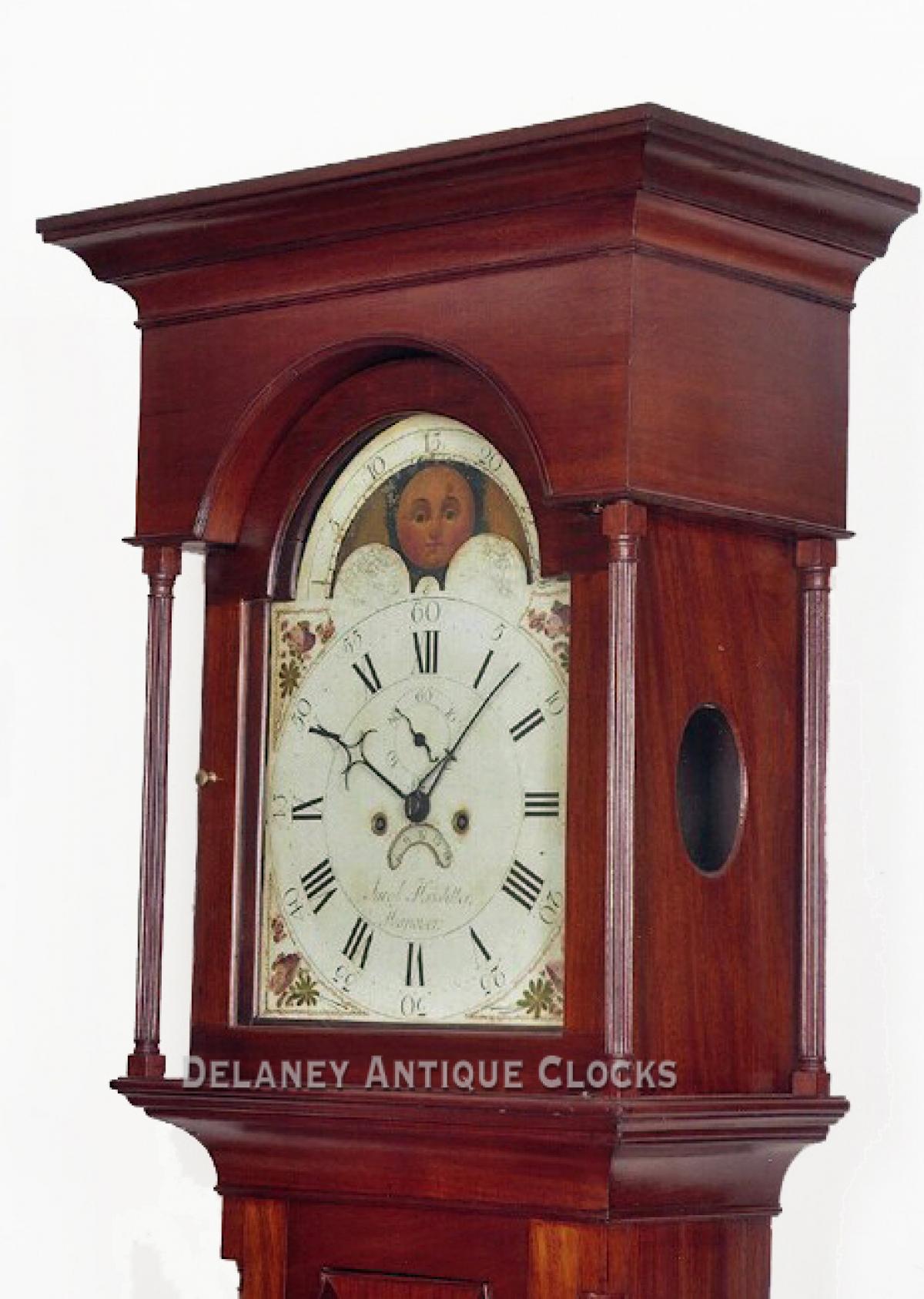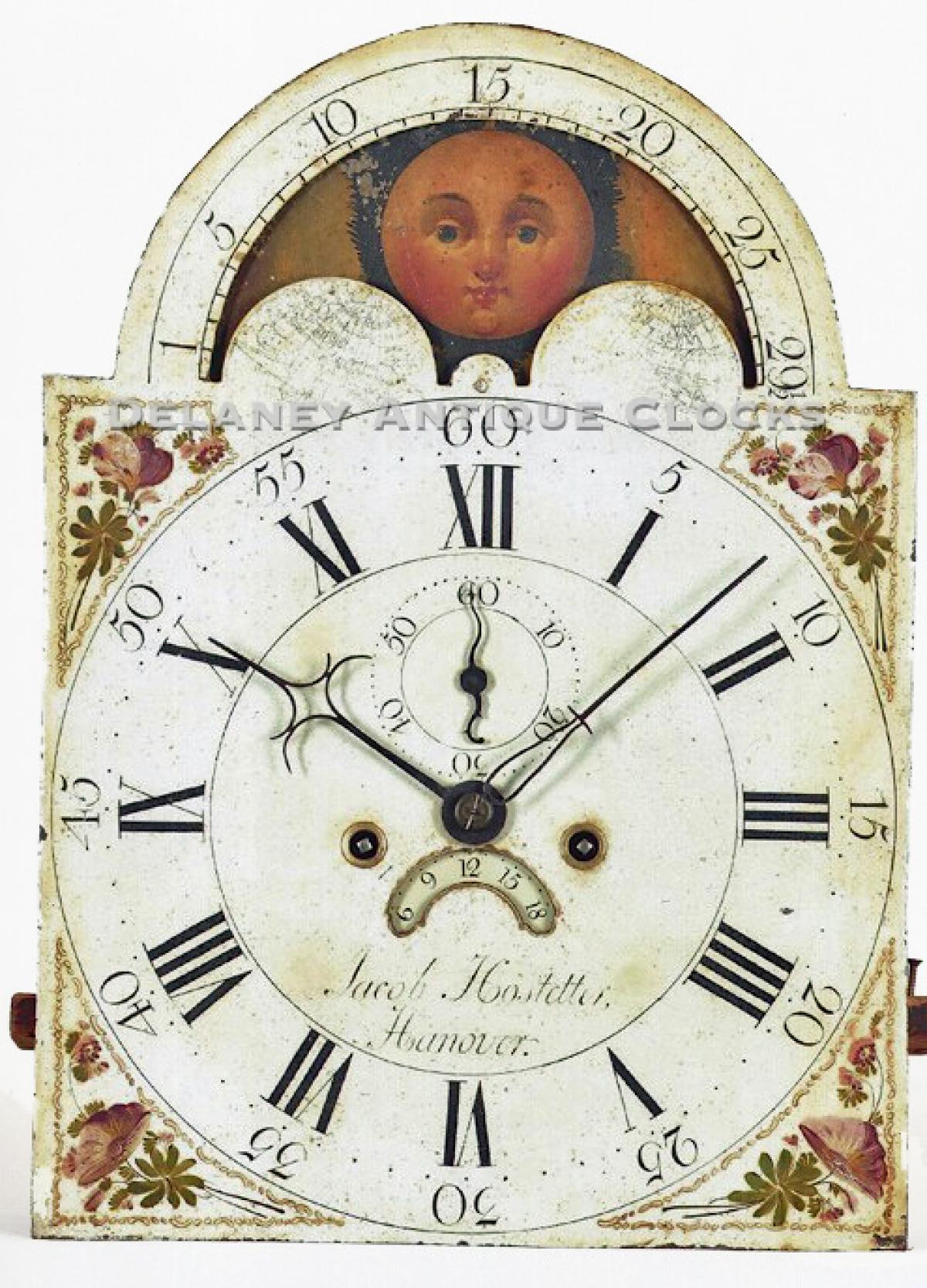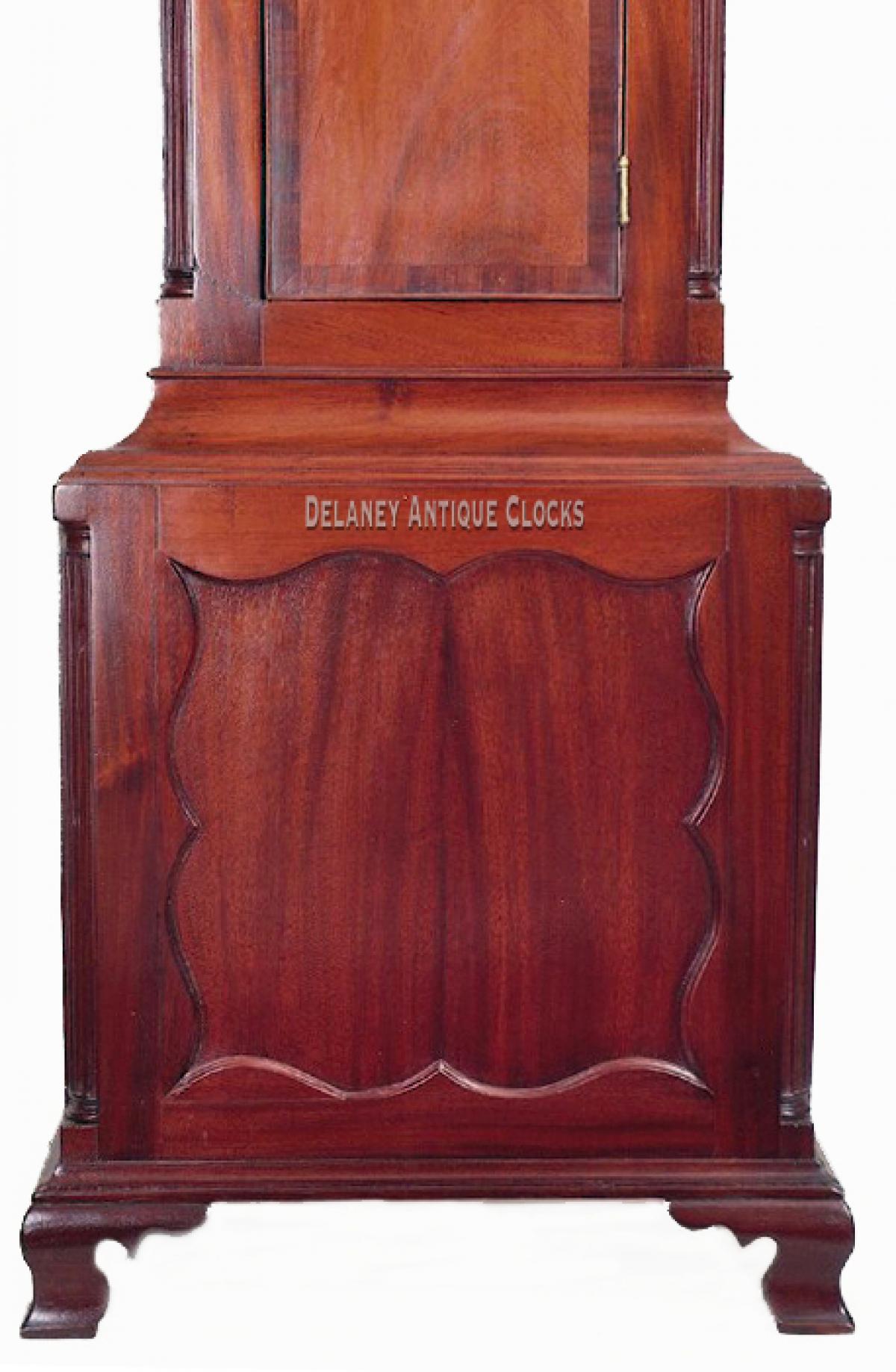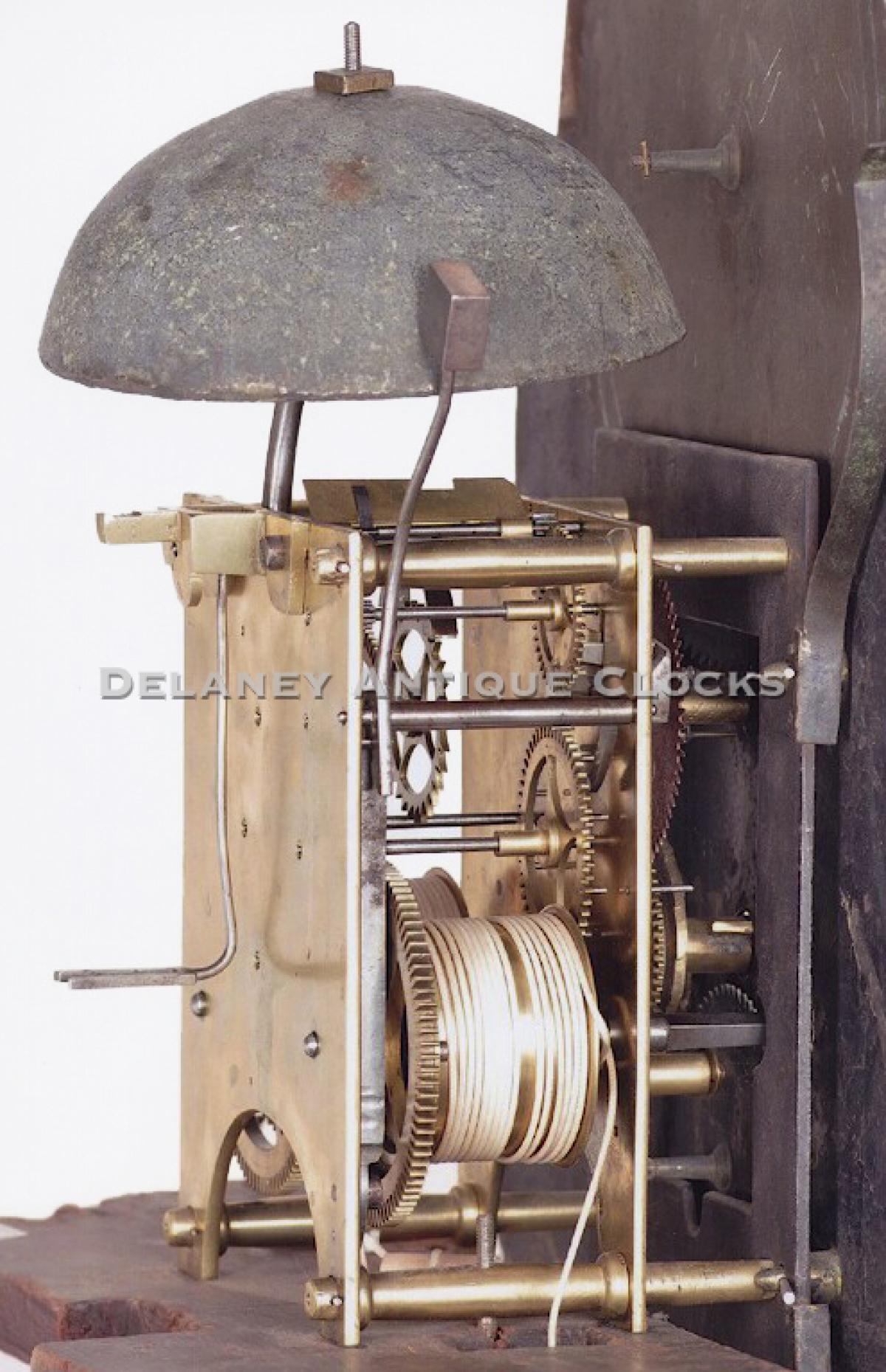Jacob Hostetter of Hanover, Pennsylvania (York County). Tall clock.
This walnut case clock has bold Germanic proportions and exhibits very good color. The finish has taken a deep shade of brown that is warm and inviting. This case stands on four boldly formed ogee bracket feet. The base features inset fluted quarter columns that terminate in turned wooden capitals. The base panel is fitted with an inset panel that is trimmed with a decorative border and a simple molded edge. The waist is long. Fluted quarter columns are fitted into the corners of the case. A large waist door is centered in this section. It is cross banded with mahogany along the outer edge and framed with a cock beaded molding. The bonnet features a large double stepped cornice molding. Four fully turned and fluted bonnet columns flank the sides of the case. The arched bonnet door opens to a nicely painted iron dial.
This iron dial is colorfully painted. The display of the hours and minutes is in a traditional format. The steel hands are somewhat unusual and are an interesting form. A subsidiary seconds dial and calendar date is positioned with in this time ring. This dial is signed by the Maker, \Jacob Hostetter, Hanover\" below the calendar aperture. The floral decorations in each of the four spandrel areas are colorful. This dial also features a lunar calendar or moon phase mechanism in it's arch.
The brass constructed movement is weight powered and designed to run eight-days on a full wind. It is good quality. This clock will strike each hour on a bell. The striking system features a rack and snail design.
This clock was made circa 1800. It stands 7 feet 6 inches tall. It is inventory number 27202.
"
Jacob Hostetter is a listed Maker in the horological literature. Jacob was born on May 9th, 1754 near York, Pennsylvania. He died on June 29th, 1831 in New Lisbon, Columbiana County, Ohio. He attended the common schools of the day and served his apprenticeship in clockmaking to Richard Chester of Hanover, Pennsylvania. The town of Hanover was located on an important trade route to Baltimore and Chester had an established business there. In 1784, Jacob is recorded as being married and living on Frederick Street. In 1788 he is listed in the tax records as a clockmaker and in 1797, Hostetter becomes a member of the General Assembly. His serviced lasted until 1802 and he served as a Democrat. From 1802 through 1823 he is listed as operating a brass foundry. He also served in the U.S. House of Representatives in 1818 through 1821. In 1825, Hostetter moves from York County to Ohio. Numerous clocks have been recorded. Eight day as well as 30 hour versions have been seen. A 30 hour example is in the collection of the Historical Society of Carroll County in Westminster, Maryland.



